My hip hurts. That’s how I kept describing this ache near the top of my rump, until my Physical Therapist, Stu from Elevate PT, finally said it’s your glutes and probably your Piriformis muscle.
Wait, did he just say I have a literal pain in the ass??
Indeed and it’s an all too common issue.
Even though the piriformis is a small muscle, it can have a big impact on our daily lives. Addressing this problem, and seeking a safe solution is key to overcoming it.
In this article, I’ll be sharing with you some useful exercises to help alleviate that pain in the butt you’re experiencing, making sure to be safe in the process.
What is the Piriformis?
To understand what Piriformis Syndrome is and whether what you’re experiencing truly is that we need to first look at what the piriformis is.
The piriformis is a small muscle in your glutes that’s flat and band-like. It starts from near the top of your hip joint in the buttocks (specifically from the sacrum) and travels down to the top of your thigh bone.
This is also why issues related to piriformis can be described as pain that you feel in your hip or bum.
The piriformis assists us with lower body movement since it stabilizes our hip joint and lifts and rotates our thighs away from the body.
In this way, it enables us to walk, shift our weight from one foot to another, and even balance ourselves.
What is Piriformis Syndrome?
Piriformis Syndrome occurs when the piriformis muscle presses on the sciatic nerve, and thus causes pain.
Our sciatic nerve is a thick and long nerve that passes alongside or goes through the piriformis muscle. It then goes down the back of our legs and eventually branches off into smaller nerves ending in our feet.
The sciatic nerve is the largest nerve in the body, responsible for innervating the lower back and lower extremities. When the piriformis muscle spasms or becomes tight, it can put pressure on the sciatic nerve, resulting in pain, numbness, and tingling sensations in the buttock and down the leg.
Muscle spasms in the piriformis can, therefore, result in nerve compression in the sciatic nerve. This is also known as sciatica, aka that shooting nerve pain down your leg.
The piriformis muscle plays a crucial role in the movement and stability of the hip joint. It aids in the rotation of the hip, allowing the leg to turn outward. This muscle sits deep in the buttock region, situated beneath the gluteal muscles.
Although it is a relatively small muscle, the piriformis can cause significant discomfort when it becomes inflamed or irritated.
Issues with a Tight Piriformis
Like I mentioned above, the piriformis muscle assists us in lower body movements.
But more than this, having a healthy piriformis muscle and doing the exercises I’ve mentioned down below it can help ease the pain you might have in your knee, ankle or plantar fasciitis.
Having a tight piriformis puts extra strain on the inside and the outside joint of our knee joints – by making the inside weak, and the outside too tight. This leads to an unstable knee joint, putting additional strain on your ankles as well.
These stretches allow us to relieve tight piriformis muscle and hamstrings, relieving the additional strain. It makes sure we can walk (and run) with the correct form, in turn helping to alleviate injuries.
Causes of Piriformis Syndrome
There are several potential causes of piriformis syndrome. It is important to identify the underlying cause to determine the most appropriate treatment approach. The following are some common causes of piriformis syndrome:
Trauma and Injury
Direct trauma or injury to the buttock region can cause the piriformis muscle to become damaged or inflamed. A fall, car accident, or sports-related impact can lead to the development of piriformis syndrome. It is important to seek medical attention if you have experienced any trauma to the buttock region and are experiencing symptoms consistent with piriformis syndrome.
Trauma and injury can have a significant impact on the piriformis muscle and surrounding structures. The forceful impact can cause the muscle fibers to tear or become strained, leading to inflammation and pain.
Plus, the surrounding tissues, such as tendons and ligaments, may also be affected, further contributing to the development of piriformis syndrome.
In some cases, the trauma or injury may not be immediately apparent. It is possible for piriformis syndrome to develop gradually over time as a result of repetitive microtrauma.
This can occur in individuals who engage in activities that involve repetitive movements or prolonged sitting, such as long-distance driving or desk jobs.
Overuse and Strain
Overuse and strain of the piriformis muscle can occur from repetitive activities that involve hip movement, such as running, cycling, or sitting for extended periods.
These activities can lead to muscle imbalances and tightness in the piriformis muscle, increasing the risk of developing piriformis syndrome. Taking regular breaks, practicing proper stretching, and engaging in cross-training exercises can help prevent overuse injuries.
Overuse and strain injuries are common among athletes and individuals who engage in repetitive activities. The piriformis muscle plays a crucial role in stabilizing the hip joint and facilitating movement.
When this muscle is overused or strained, it can become fatigued and develop tightness, which may lead to the compression of the sciatic nerve and the development of piriformis syndrome.
It is important to note that overuse and strain injuries can also occur in individuals who are not involved in high-impact activities.
Prolonged sitting or maintaining a sedentary lifestyle can also contribute to muscle imbalances and tightness in the piriformis muscle, increasing the risk of developing piriformis syndrome.
Anatomical Variations
Some individuals may be more prone to developing piriformis syndrome due to their unique anatomical variations. This can include having a tight or enlarged piriformis muscle, changes in the alignment of the pelvic bones, or variations in the course of the sciatic nerve.
These structural differences can increase the likelihood of compression or irritation of the sciatic nerve by the piriformis muscle.
Anatomical variations can play a significant role in the development of piriformis syndrome. Individuals with a tight or enlarged piriformis muscle may be more susceptible to compression of the sciatic nerve, leading to the onset of symptoms.
Similarly, changes in the alignment of the pelvic bones can alter the biomechanics of the hip joint, potentially increasing the risk of piriformis syndrome.
Variations in the course of the sciatic nerve can also contribute to the development of piriformis syndrome.
In some individuals, the sciatic nerve may pass through or around the piriformis muscle, making it more susceptible to compression or irritation. This can occur due to genetic factors or developmental abnormalities.
5 Step Approach to Handling Piriformis Syndrome
Now that you know what the piriformis muscle is and how it affects your body, let’s look at the 5-step approach to handling piriformis syndrome.
According to Lauren Seserko, OTR/L, “Unfortunately if your piriformis is stressed or inflamed there is no magic bullet to fix it. Reducing inflammation, physical therapy, and stretching as well as identifying and changing any possible weakness, imbalances or gait impairments is key.”
So I’m sorry no magic bullets, but hopefully a plan.
Step 1: Is it your piriformis muscle causing pain?
First thing’s first – we need to make sure the pain you’re feeling is a result of your piriformis muscle or if it’s something else.
According to Danny Singles, PT, DPT, MA, “This one in particular is important to check in with a skilled medical professional who has experience with runners and running athletes so they can help you tease out what is actually going on with your pain. This is a common “popular diagnosis” because runners often overuse these areas with running too hard and with prolonged sedentary poor posture.”
Another cause of pain in this region could be sciatica caused by a herniated disc, lumbar or other nerve issues. That’s why it’s important to get the correct diagnosis first from a trained professional, especially if you suspect a herniated disc.
The most common symptoms of piriformis syndrome are:
- deep pain in your bum (only on one side)
- pain that radiates down the back of the thighs and leg (can go all the way to the calf sometimes)
- numbness, pins and needles sensation, or tingling in the glute and back of the leg
- pain when sitting
- pain when walking up stairs or inclines
- a seemingly decreased range of motion in the hip joint
If any of these symptoms are ringing a bell to you, get checked by a trained professional that will perform a physical examination using a variety of movements to check for pain in the piriformis muscle.
In case a herniated disc is suspected, an MRI may be performed to rule it out before you get diagnosed with piriformis syndrome. Better to be safe, than sorry!
Your healthcare provider will also let you know whether you require further medical treatment or physical therapy.
If you get diagnosed with piriformis syndrome and require some physical therapy, don’t fret – this article lays down useful exercises to help alleviate the pain from it.
Causes in runners?
If you’re a runner experiencing piriformis syndrome, none of these will surprise you:
- Overuse. (doing too much too soon or too much intensity)
- Tight hips.
- Muscle weakness.
In other words, you better be doing all the hip strengthening and glute exercises I recommend to keep it at bay.
Step 2: Seeking Treatment
Now that you’ve gotten diagnosed with piriformis syndrome, it’s time to get your piriformis to release and then move on to doing consistent exercises at home to create strength and prevent it from coming back.
Some of these are do-it-yourself and some require a little assistance.
- Dry needling– I’ve seen this work for a lot of people
- Chiropractic care– if a nerve is pinched this is necessary to relieve it
- At-home stretching and strengthening exercises (see below)
- Using a massage ball to do deep tissue work in the glute
At home tools for Piriformis treatment:
While it’s great to hit up your sports chiropractor for an adjustment, doing some of these things at home consistently will make a big difference and few tools under $20 are all you need.
⏩ My favorite PT ball for getting in to that glute
⏩Mini resistance bands for hip work
BONUS TOOL:
If you really want to invest in your long term recovery, I’ve been using massage guns and found that it’s helping to provide a little more muscle relaxation.
The vibration helps to distract pain signals, which is also key for healing! It’s half the price of other massage guns, with all the same features!!
Step 3: Exercises to Alleviate Piriformis Syndrome Pain
The next step is to perform exercises that will help alleviate the pain caused by piriformis syndrome to help relieve the symptoms and the condition over time.
Do these exercises on whichever side is experiencing the pain, that is the affected leg. I am going to say right for consistency.
Aim for at least three days per week, though you could benefit from daily piriformis stretch exercises.
90/90 Stretch
I feel like this one is a double bonus because you’re also working on hip mobility! She does such an amazing job of explaining the exact positions that I will let her video be your guide.
Lying Piriformis Stretch
It’s easy to confuse this with a figure four stretch you may have done before and is so often shown as a way to stretch your piriformis, but it’s not quite hitting the muscle the way we want.
Lying on your back, drawn your right knee to your chest then with light pressure pull your knee and ankle towards the left shoulder. You won’t actual roll to the side or notice a huge amount of movement.
I wanted another video to help explain this is NOT the figure four stretch and well these guys are seriously so cute and clearly extraordinarily knowledgeable. The first exercise is the one I mention, but the others are great too.
Side Leg Lifts
Lay on your left side with hips stacked and legs straight. Raise and lower your right leg with your foot flexed and pointed forward.
Get your leggings out and go Jane Fonda if it helps.
Supported Hamstring stretch
With your right foot straight in front of you on a bench or a second step, flex the foot towards you. Slow lean slightly forward in to the stretch and hold for 30 seconds.
You can repeat this throughout the day and for a little more, do it as the 3D method friends at Finish Line Physical Therapy in NYC provided “to hit the muscle from all angles.”
How Do These Exercises Reduce Pain Caused by Piriformis Syndrome?
If you perform these exercises correctly and consistently, they will make your piriformis muscle more flexible.
In turn, this makes it less likely for your piriformis muscle to irritate the sciatic nerve that runs just underneath it and relieve sciatic pain.
Step 4: Inflammation Reduction
You know I’m not a fan of runners and pain relievers, they cause you to do too much or damage the liver. Instead my focus is on how we can reduce inflammation to help the body heal.
Inflammation is how your body knows there is something that needs to be resolved, so trying to mash it down with pain relievers doesn’t always get us where we want to go.
What I have found to work are a few really easy to implement tools. Here’s more information on them:
- CBD for recovery (helping breakdown all your questions about CBD)
- Turmeric capsules for inflammation
- Eating anti-inflammatory foods
Step 5: Making Sure Not to Overdo It
The last step is one of caution – don’t overdo it. Listen to your body and feel how it’s reacting to the stretches I mentioned above.
Like any other form of physical exercise, stop if it starts hurting. You’re not looking to irritate your sciatic nerve even further; our aim is to do stretches that relax the piriformis and make it more flexible.
If you feel more tightness and pain, watch the videos again and read my instructions again too – check to see if you have the correct form, and go slow.
Prevention is always better than cure. So even if you’re not entirely suffering from piriformis syndrome, these exercises will help prevent it from occurring in the first place!
Looking for additional running tips?
- How to tell discomfort from running pain?
- Pre-Run Warm Up examples to help prevent injury
- 30 Day Core Program to work hips, glutes and core for injury prevention
Other ways to connect with Amanda
Get each new post in your inbox — talk about speedy service
Facebook: RunToTheFinish
Get more inspiration on Pinterest
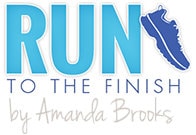
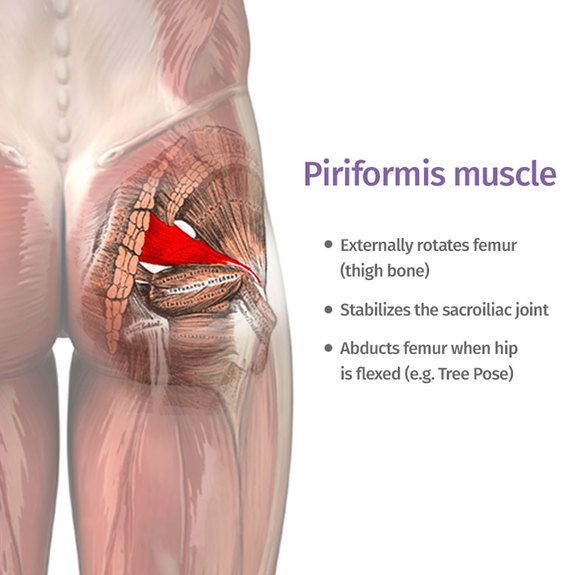
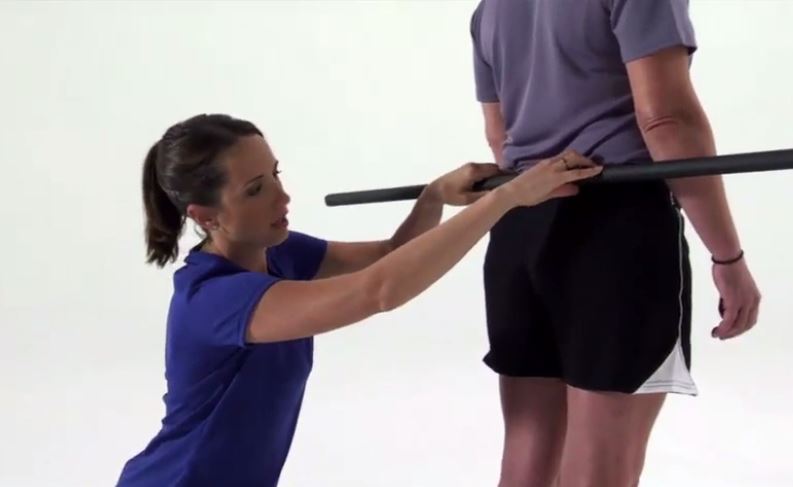
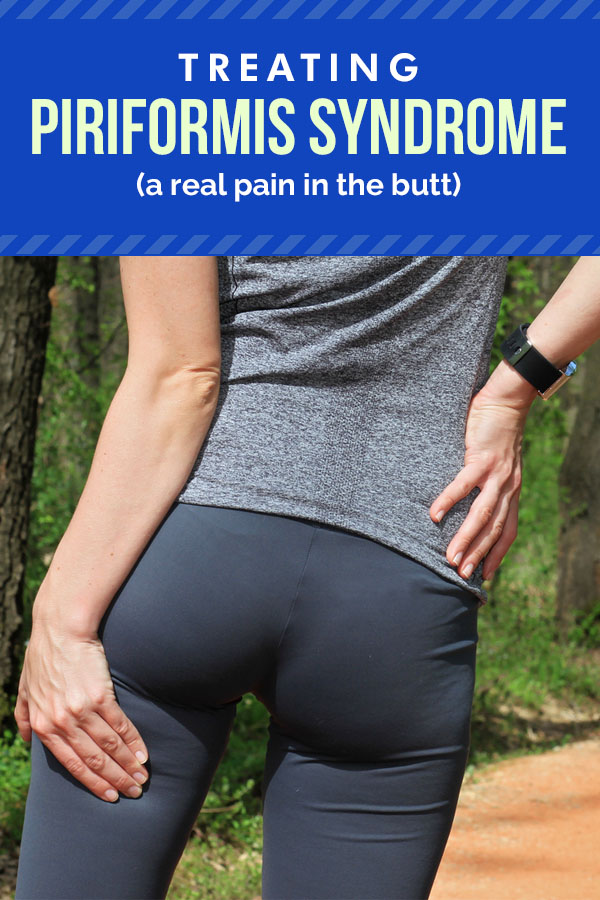
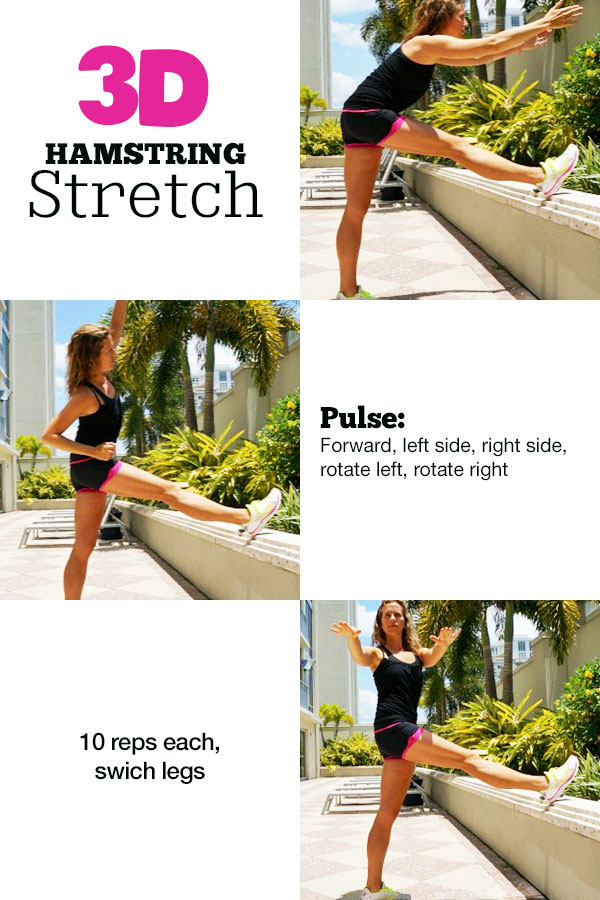

 7 Best Balance Exercises for Runners
7 Best Balance Exercises for Runners